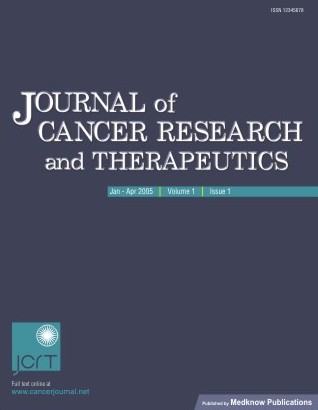
|
Journal of Cancer Research and Therapeutics
Medknow Publications on behalf of the Association of Radiation Oncologists of India (AROI)
ISSN: 0973-1482 EISSN: 1998-4138
Vol. 3, Num. 4, 2007, pp. 187-187
|
Journal of Cancer Research and Therapeutics, Vol. 3, No. 4, October-December, 2007, pp. 187
Editorial
NANO: A paradigm shift
Huilgol Nagraj G
Division of Radiation Oncology, Nanavati Hospital, S.V. Rd, Vile Parle (West), Mumbai - 400056
Correspondence
Address: Dr. Nagraj G Huilgol,
Dr. Balabhai Nanavati
Hospital, S.V. Rd,
Vile Parle (West),
Mumbai - 400056, India.
E-mail: nagrajhuilgol@gmail.com
Code
Number:
cr07047
"Nano" is the name of a new car to be marketed by an Indian company. It was recently showcased both in Delhi and Detroit. It is a fuel-efficient car and is Euro IV compliant. It was designed in India for both the Indian and overseas markets. Most remarkably, it costs less than 3000 dollars. The Nano, thus, fulfills the need and aspirations of the millions who could not earlier dream of owning a car. What is the relevance of the Nano to radiation oncology?
Radiation
oncology,
like
the
automobile
industry,
has
a
range
of
technologies
which
keep
changing
at
a
rapid
rate.
There
are
cars
at
either
end
of
the
spectrum;
similarly,
in
radiation
oncology,
the
technology
that
starts
with
the
workhorse
telecobalt
machine
can
end
with
the
CyberKnife
and
proton
accelerators.
The
plethora
of
technologies
helps
individualize
the
physical
optimization.
The
availability
of
contemporary
technology
has
become
a
reason for
escalating
radiation
doses
to
increase
local
control,
and
maybe
survival,
in
some
patients.
Yet,
this
assumption
has
no
incontrovertible
biological
basis.
Acronym
developed
over
a
long
period
of
time
may
be
biologically
inferior
to
conventional
fractionation.
IMRT,
like
coronary
angioplasty
and
coronary
bypass,
has
become
an
increasingly
popular
modality,
but
without
any
phase
III
trials
as
required
in
the
practice
of
evidence-based
medicine.
Snake
oil
merchants
are
partially
responsible.
They
have
not
stopped
at
IMRT
but
are
pushing
all
kinds
of
image-guided
radiation
therapies.
Unfortunately,
all
this
marketing
and
induction
of
untested
technologies
leads
to
escalating
costs
and
not
just
escalation
of
dose
alone.
It
leads
to
unequal
distribution
of
healthcare,
particularly
in
those
developing
countries
where
healthcare
is
predominantly
in
the
private
sector,
with
no
social
security
or
insurance
agencies
to
pay
for
expensive
treatments.
The
Supreme
Court
of
India,
in
a
recently
delivered
judgment,
described
this
as
a "hostile healthcare environment."
This
is
a
clarion
call
for
all
those
who
are
involved
in
the
business
of
health.
It
is
time
to
develop
optimal
technologies,
biological
modifiers,
and
targeted
therapies
to
achieve
increased
survival
and
effective
palliation. "Nano" is about a paradigm shift; it is empowering those who are at the bottom of the pyramid. There
is
a
need
for
a
similar
shift
in
the
designing
of
the
technology
of
radiation
therapy.
Let
us
hope
we
all
contribute
to
it.
JCRT
is
now
indexed
in
PubMed.
This
should
ensure
wider
acceptability.
JCRT
has
achieved
this
singular
status
in
a
very
short
time.
Indexing
has
been
possible
with
the
support
of
contributors,
reviewers,
and
the
advertisers.
The
journal
intends
to
showcase
the
best
research
and
ideas
to
the
world.
The
future
plans
are "mega" in nature; the "Nano" paradigm is not for JCRT.
Copyright 2007 - Journal of Cancer Research and Therapeutics
|
